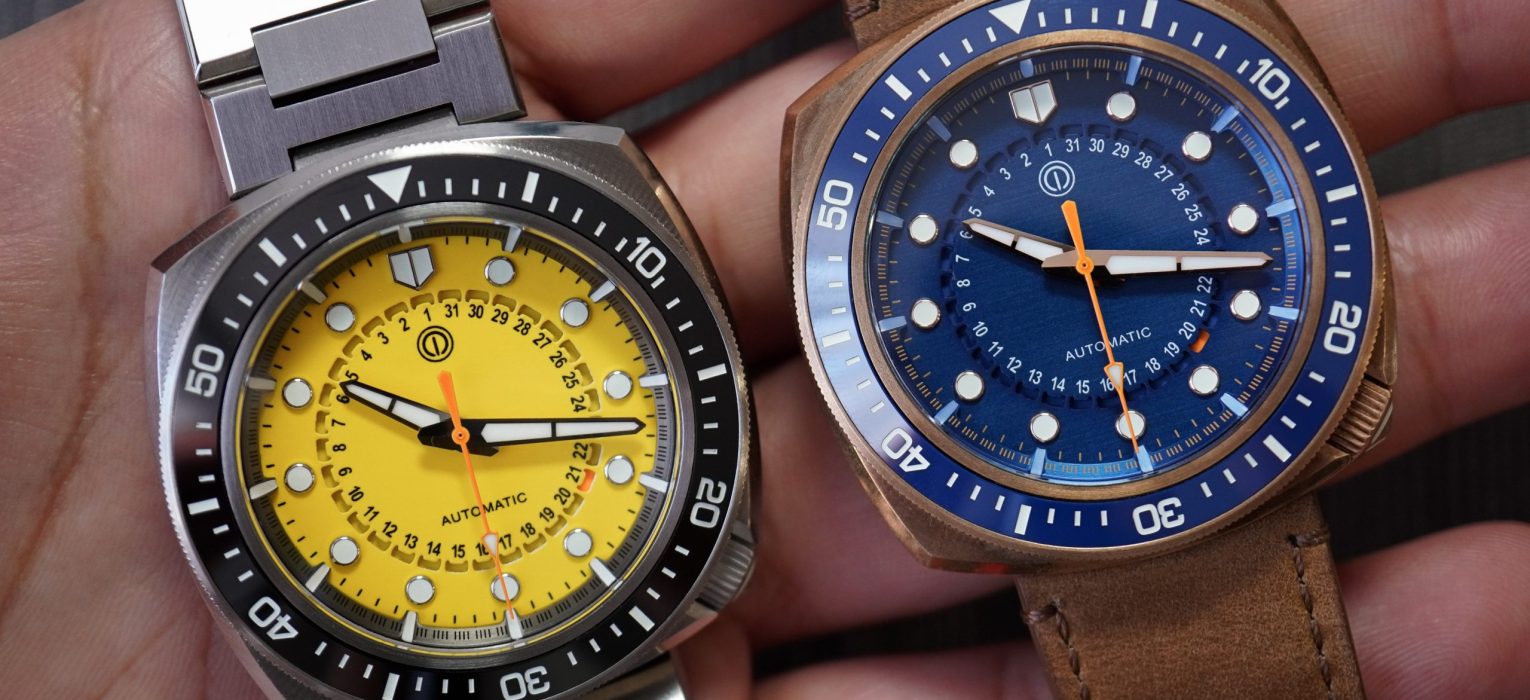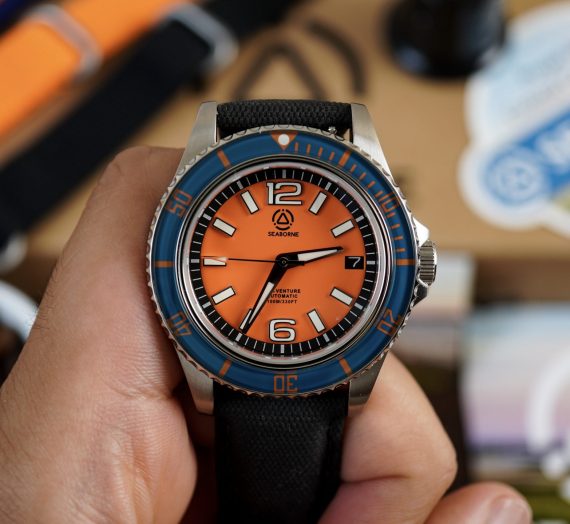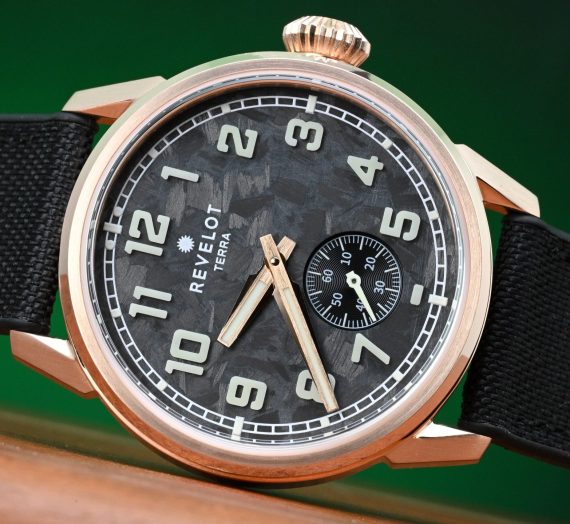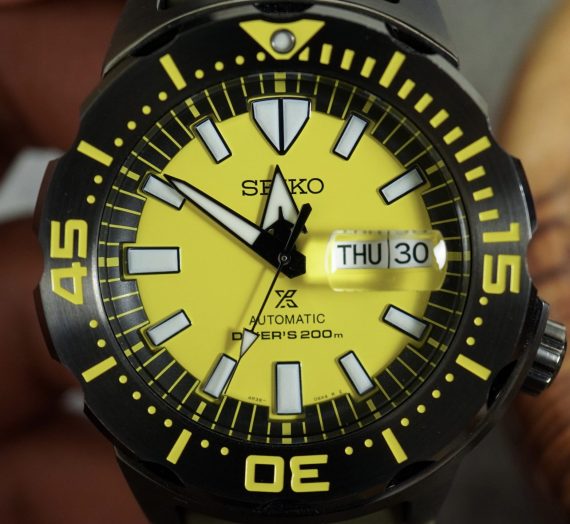Disclaimer: this video/review was not sponsored by MMI or any other entity. MMI will be sending me a production unit when these watches start to ship. This is a review of two prototype units.
Straps Featured:
Delugs Sailcloth 22mm Grey: https://delugs.com/collections/sailcloth-straps/products/grey-sailcloth-signature-strap?_pos=4&_fid=9b2d1c680&_ss=c&variant=41335029825649
Video
Review
This is my first time handling and reviewing a watch from MMI, a brand that has been active since 2019. MMI has built a reputation among enthusiasts, with their often highly recommended by those who own or have owned them. In this review, I’ll be looking at two versions of the MMI Cuttlechron, their latest release, which was funded through a successful Kickstarter campaign that wrapped up in early October. With around 150 backers contributing roughly $60,000 USD, the Cuttlechron is scheduled for delivery in January 2025.
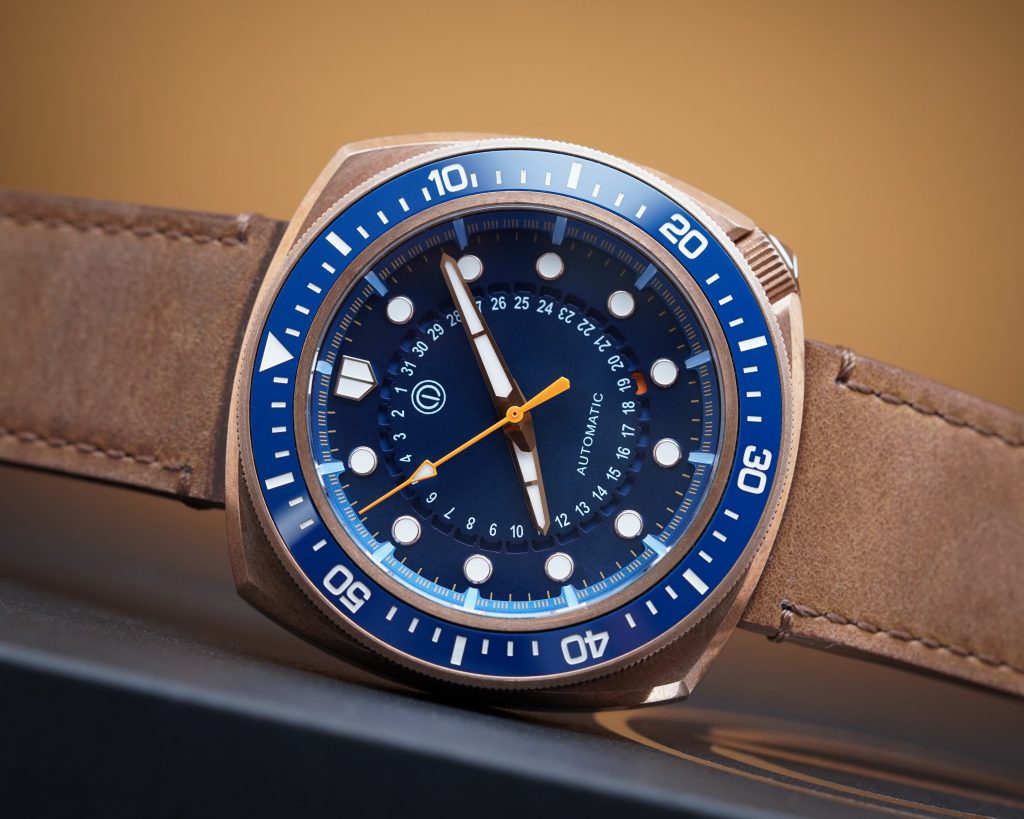
The design is inspired by MMI’s previous model, the Dumbo 500m, but has a more compact case size that still retains the unique and creative styling of its predecessor. This fits well with the current trend of slightly unconventional case designs gaining traction among collectors. The two variants I’ll be reviewing are the blue dial with a bronze case and the lumed yellow dial in a steel case. Both were offered at early bird prices of approximately $375 for steel and $415 for bronze, with current pre-orders set at $400 and $440. Once shipping begins, pricing is expected to stabilize at $500 for steel and $550 for bronze.
Let’s check it out!
Case
The Cuttlechron features a well-executed case design with identical measurements across both its stainless steel and bronze variants. The square case measures 41.5mm in both diameter and lug-to-lug width, and stands at a height of approximately 12.15mm. This compact form factor is complemented by a stealthy, integrated crown design, housing a 6.25mm screw-down crown that is signed and even lumed!
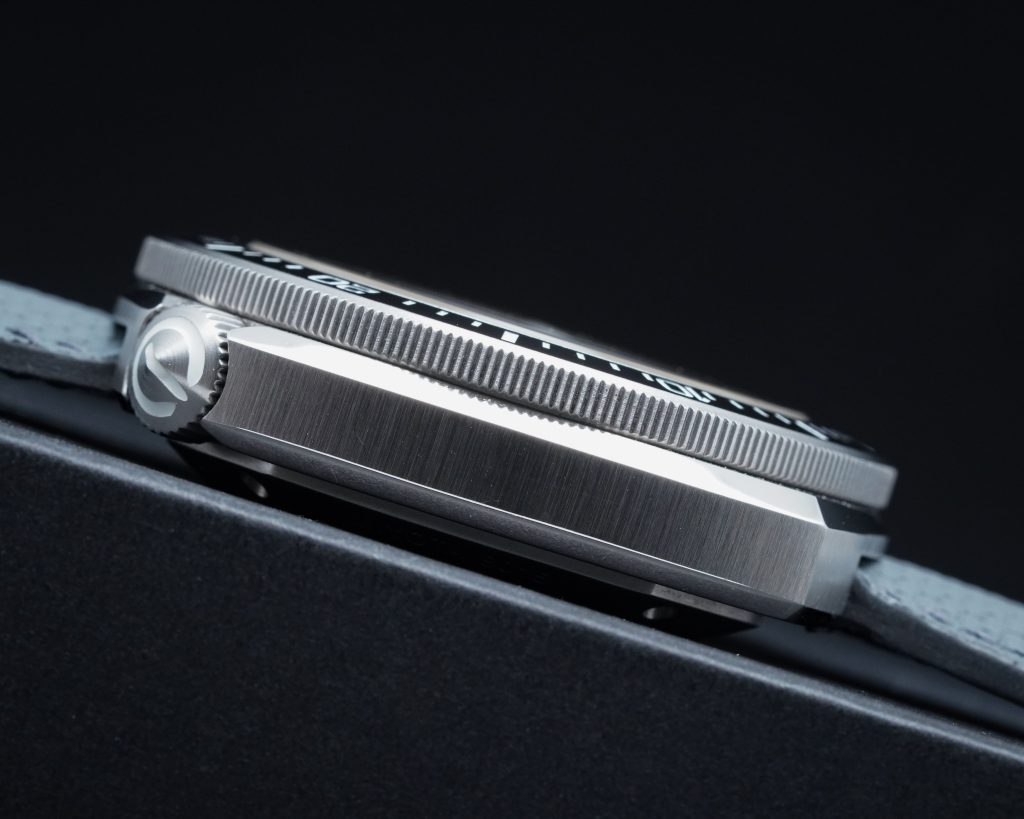
The mid-case comprises roughly 5.75mm of the overall thickness, with hidden lugs that create a streamlined profile while accommodating a 22mm lug width. The case is constructed from 316L stainless steel for the steel version and CuSn8 bronze for the bronze model. The bronze case, in particular, has a warm rose gold tone when new, which will develop a unique patina over time.
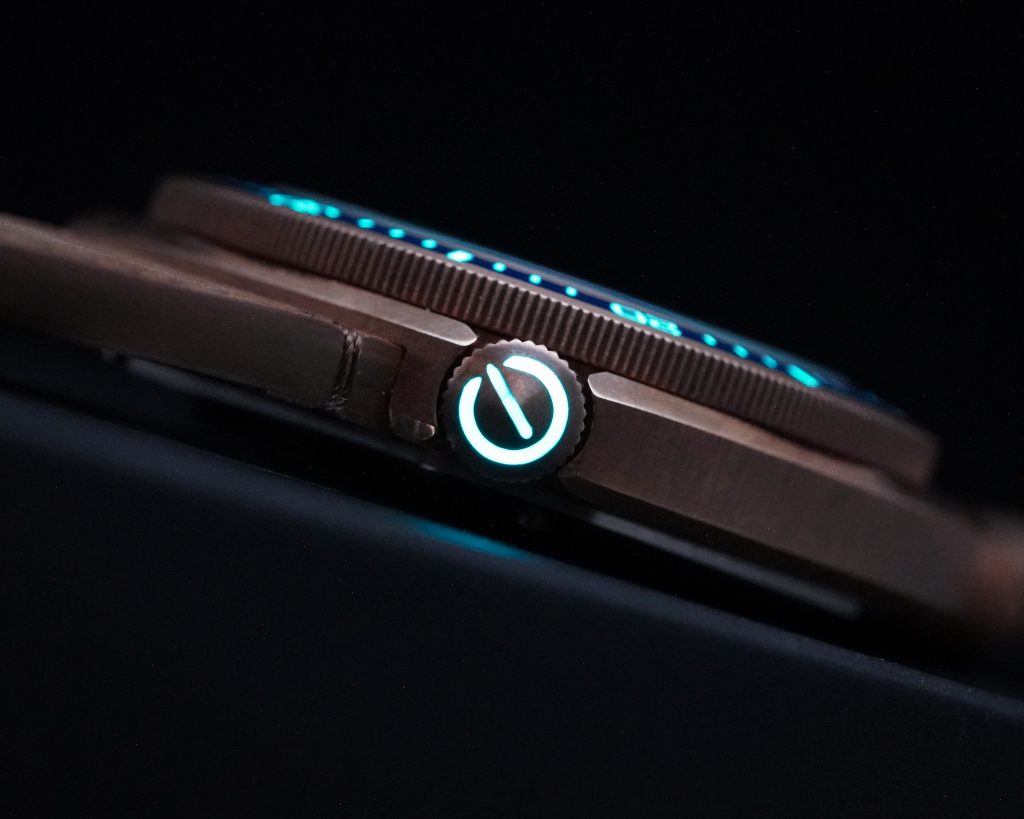
The case design is arguably the standout feature for me, effectively adapting the previous Dumbo 500m model’s aesthetic into a more wearable and versatile size. The symmetry of the case combined with the seamless crown integration is something I find very appealing. Both variants show excellent build quality, with refined finishing that holds up well to close inspection.
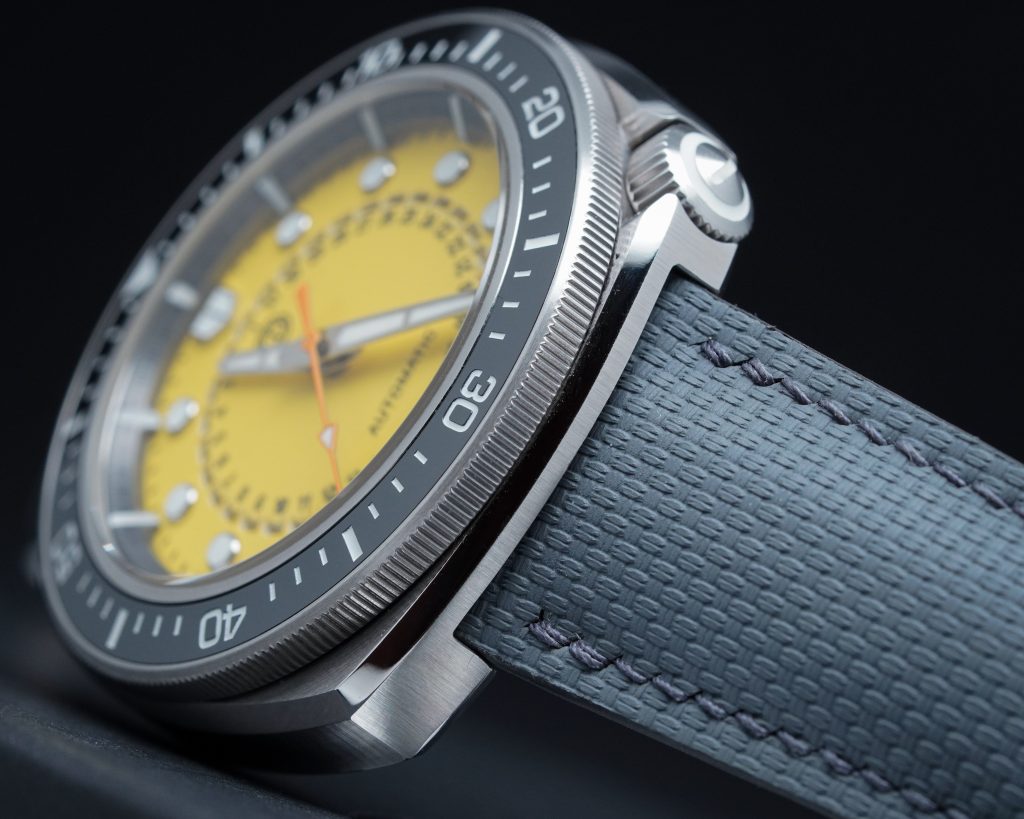
There is a 120-click uni-directional dive bezel, which offers smooth, tactile clicks without any back-play. The ceramic bezel insert is fully lumed, delivering enhanced legibility and durability for daily and low-light use. The watch is secured by a closed caseback with embossed artwork, attached to the mid-case via four screws, and provides a water resistance rating of 150m, making it well-suited for practical everyday wear and water activities.
Dial
The Cuttlechron offers a dial design that impressively delivers depth, detail, and readability, making it notable for a watch in this price range. The two dial variants reviewed here include a metallic blue option and a lumed yellow version, both available with steel or bronze cases. Each dial brings unique finishes, with the blue dial featuring a brushed metallic surface and the yellow dial covered in lumed pigment with a milky, flat appearance.
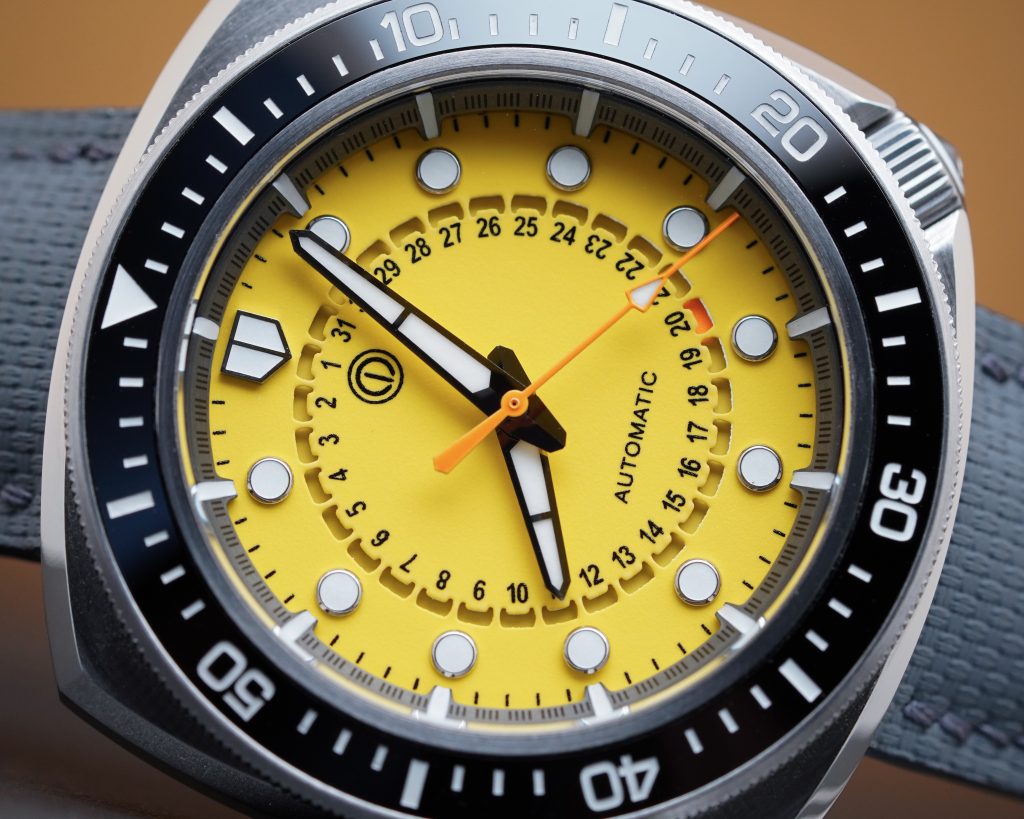
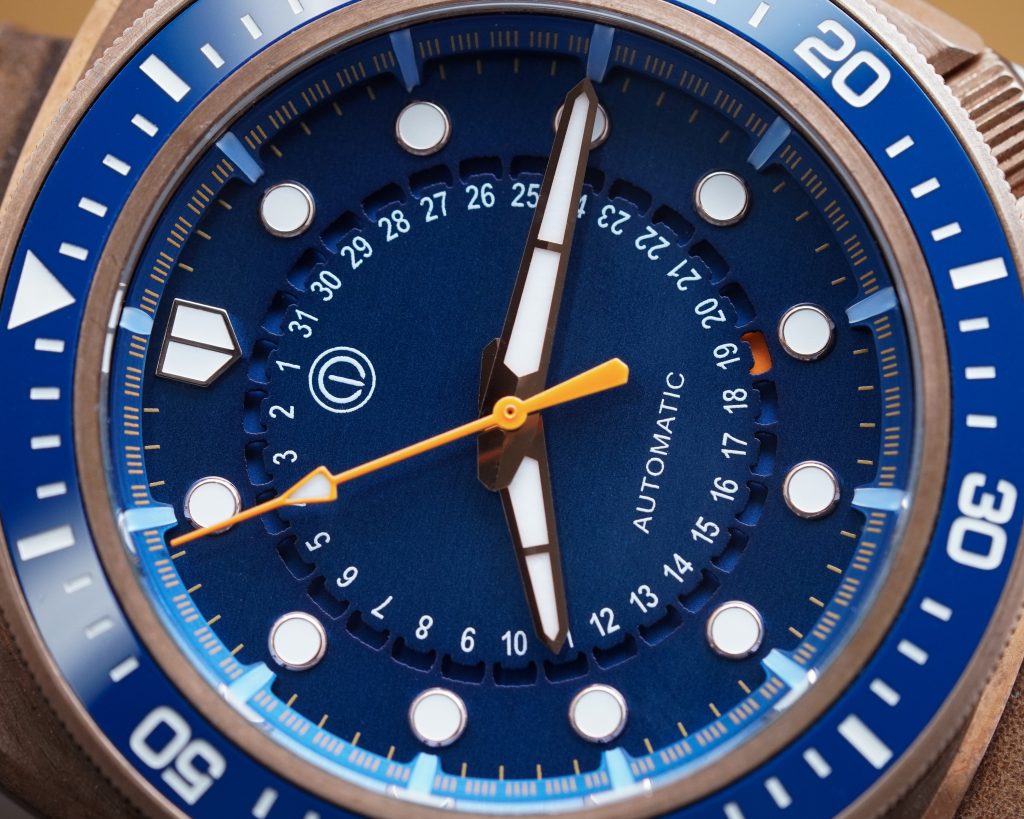
The dial structure showcases a thoughtful layout, beginning with a sloped chapter ring that adds dimension and includes substantial lume-filled sections at each hour marker, creating a striking “waterfall” like appearance. Both dials maintain clean alignment, with minute markers that line up well against the chapter ring and corresponding hour indices. The hour markers follow a double-segment layout at 12 o’clock, with circular indices at other positions, providing strong legibility and decent finishing.
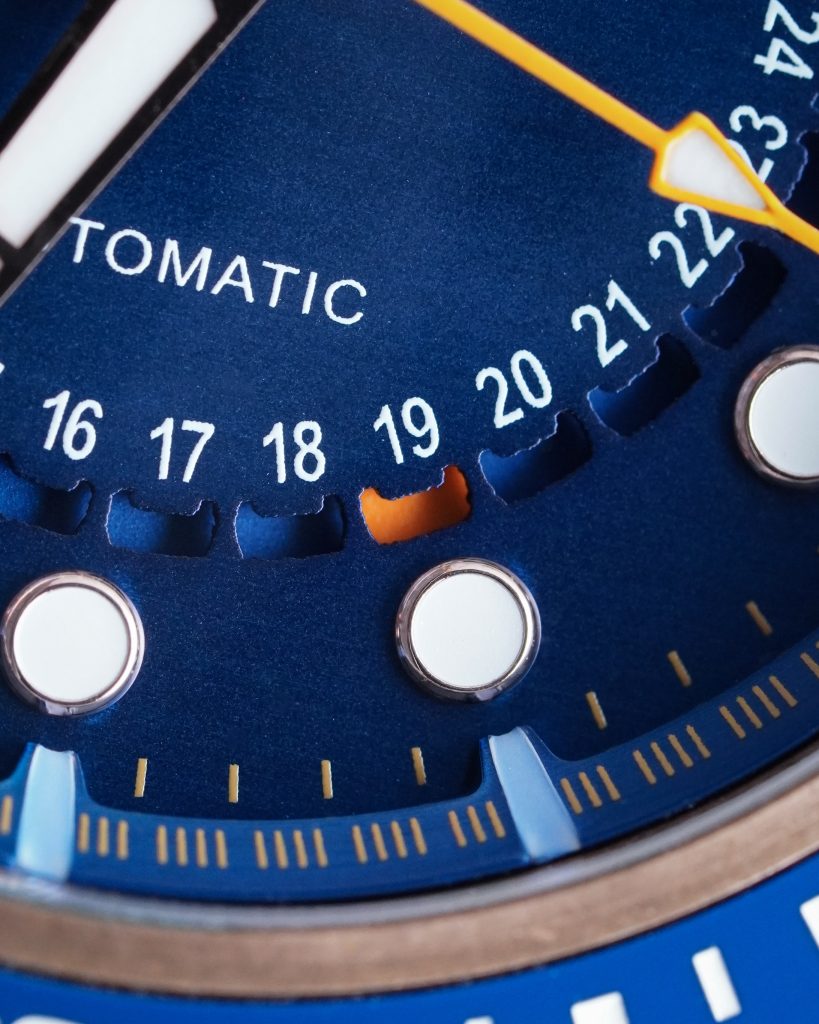
A standout feature is the date complication, which is integrated seamlessly into the dial with a multi-layer, symmetric construction. The date is displayed via a lumed colored segment moving beneath a skeletonized dial, which is both visually engaging and functional. While close inspection reveals minor roughness in the cutouts, criticizing it feels unfair given that this level of complexity is already very impressive given the watch’s price point.
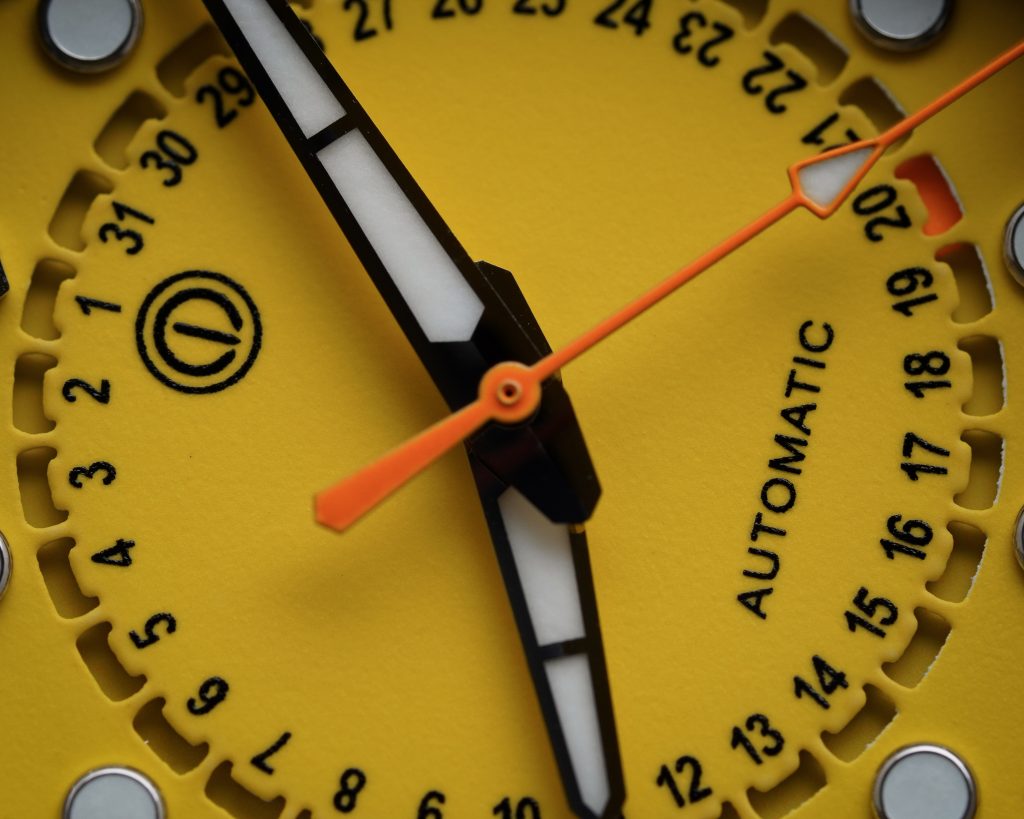
The handset follows a more classic design, with polished metal hour and minute hands that feature large lume-filled sections for readability. The seconds hand is colored to contrast the dial, completing the look with clean proportions and well-finished details.
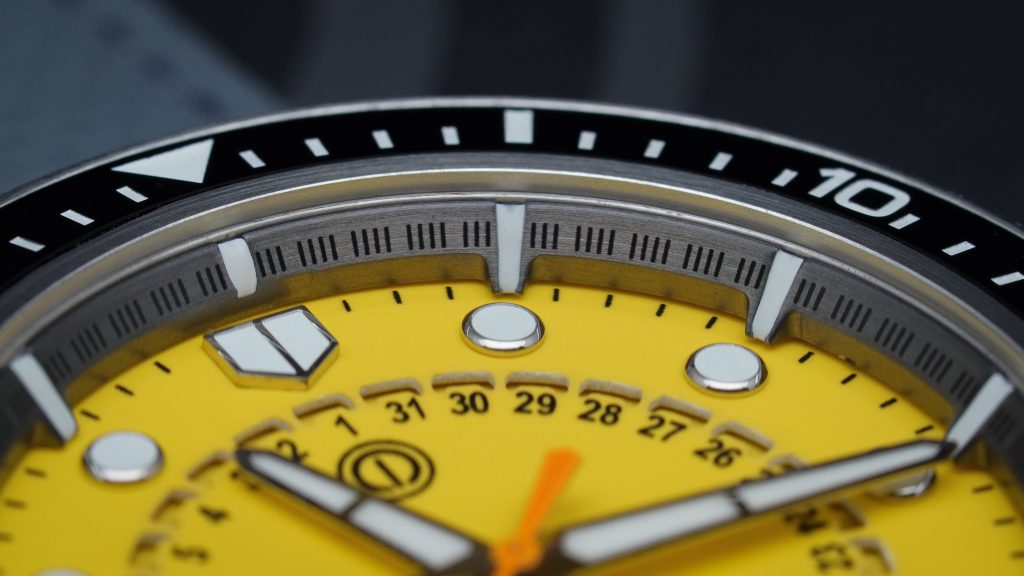
Overall, I love the dial design for its symmetry, legibility, and innovative date display. This layout provides an intuitive reading experience that is both practical and visually appealing, and I hope more affordable brands adopt a pointer style date execution.
Lume
The Cuttlechron delivers a strong lume experience, showing what micro-brands often do well. Both variants have solid lume application, and this watch is a good example of why I often recommend micro-brands for lume performance. The design is well thought-out, with lumed elements including sloped markers on the chapter ring, indices, hands, the date indicator, and even the bezel. If you’re into lume-heavy designs, MMI goes a step further with a few fully lumed dial options – like the yellow dial variant I have here – and even includes a lumed crown! What more could you ask for?
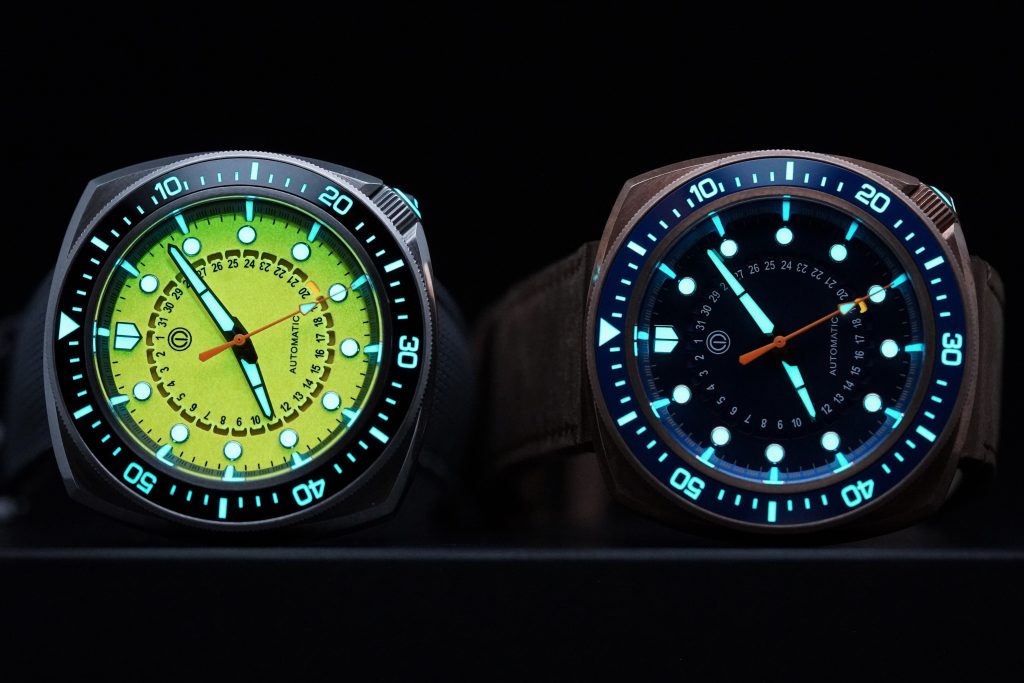
Using Grade X1 BGW9 Super-LumiNova, the lume on these watches holds up well against watches like the Tudor Black Bay Monochrome and the Christopher Ward Lumiere. Overall, lume fans will appreciate the generous application and thoughtful design, and MMI has put together a watch that makes the most of its lume-focused elements without overdoing it.
Movement
The Cuttlechron is powered by the Miyota 9015 movement, a solid choice in the sub-$1000 range, recognized primarily for its slim profile. The 9015 is notably thinner than many comparable movements from Sellita, ETA, and Seiko, which contributes to the Cuttlechron’s balanced and wearable design.
It has a reputation for durability and reasonable accuracy, making it a dependable choice for everyday wear. Known for ease of service, and cost-effective replacement options if needed, the 9015 is practical for long-term use. While I didn’t measure the prototypes’ accuracy with a timegrapher, they appeared to be running within a single-digit daily deviation. In terms of value, MMI’s choice of the Miyota 9015 fits the watch well within its price category, and I couldn’t think of a better movement choice.
On The Wrist
The watch wears comfortably on a range of wrist sizes, including my 6.75″ wrist. Thanks to its lug-less design and compact 41.5mm diameter and lug-to-lug width, it sits well on wrists of varying sizes. These proportions make it adaptable, so whether you have a wrist under 6” or above 7”, the watch is likely to feel well balanced.
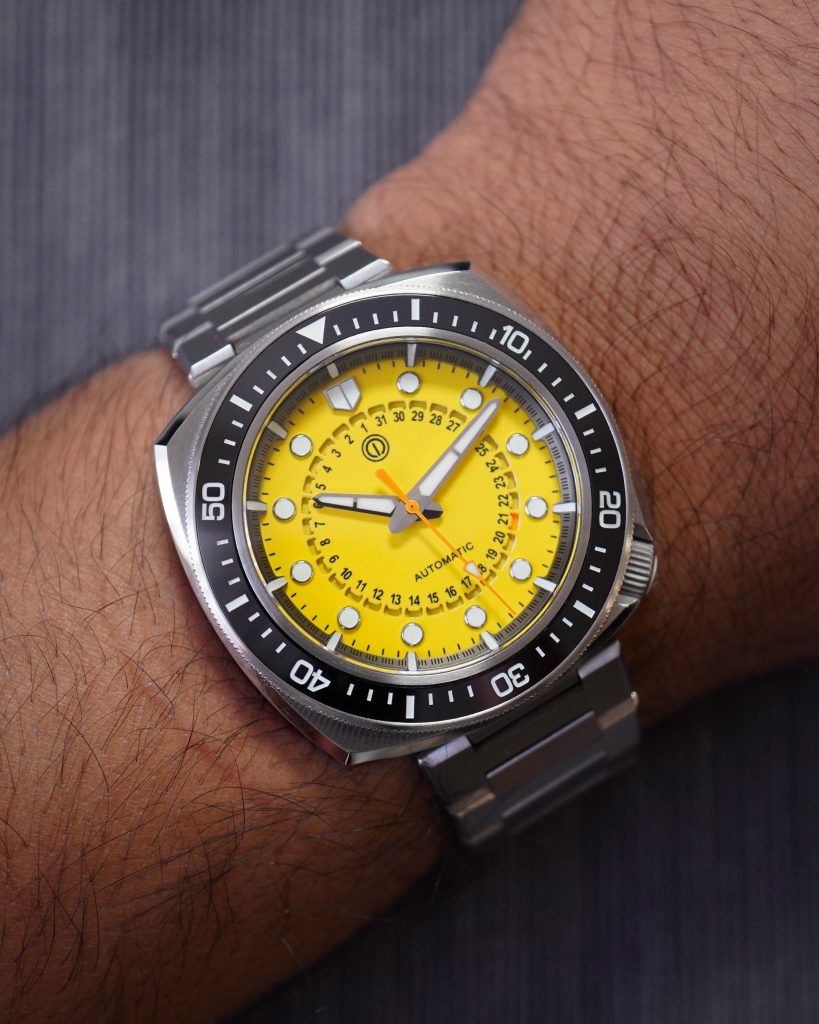
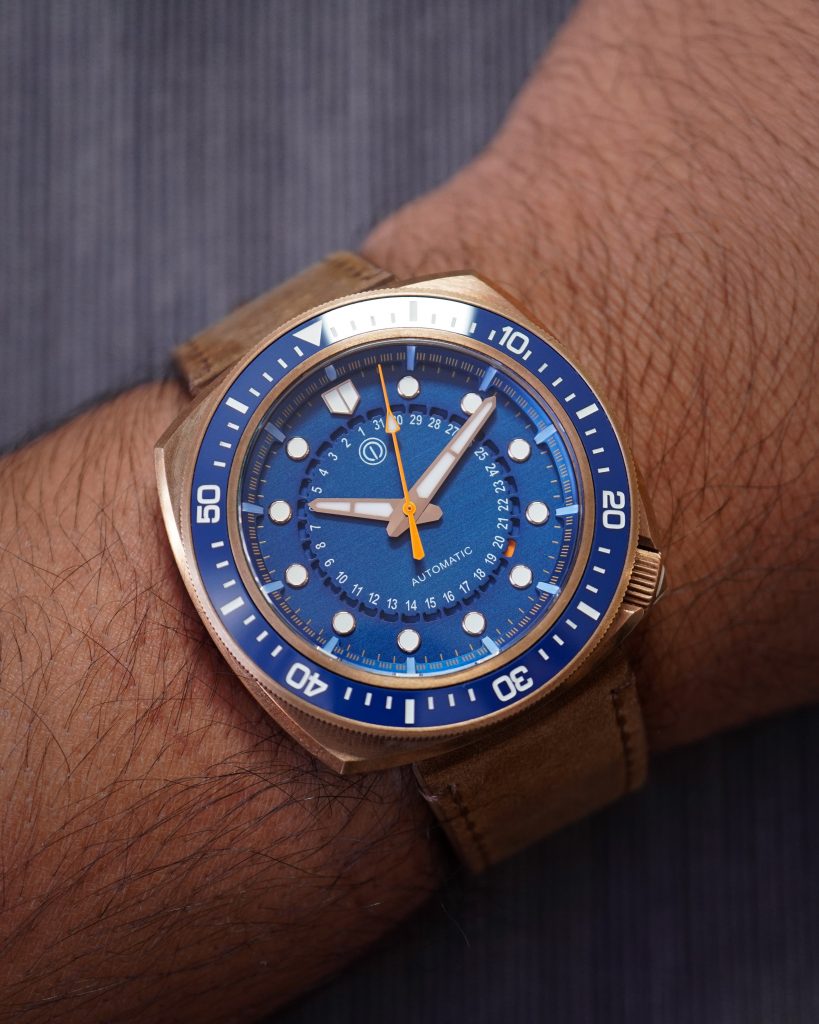
At 12.15mm thick, it isn’t the slimmest diver in its category, and the thickness might seem exaggerated by the compact case proportions. However, on the wrist, it feels relatively slim and well-proportioned, with no issues in comfort. The steel case variants come with a solid steel bracelet tapering from 22mm at the lugs to 20mm at the clasp, and while the taper is subtle, a taper to 18mm is what I would’ve gone with. Still, this choice does not impact comfort, and the bracelet itself has excellent build quality for a watch in this price range, with a level of finishing comparable to brands like Zelos and Halios. The bracelet links have polished bevels, articulate well, and offer a smooth feel with consistent finishing that stands out in this segment.
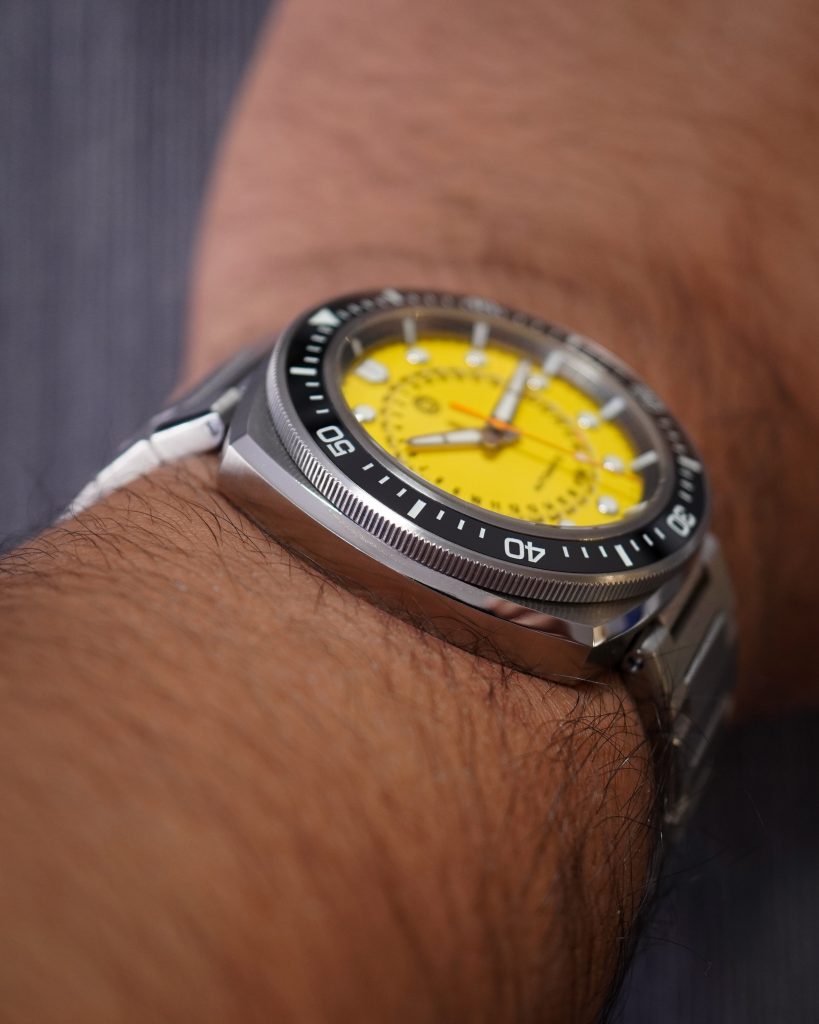
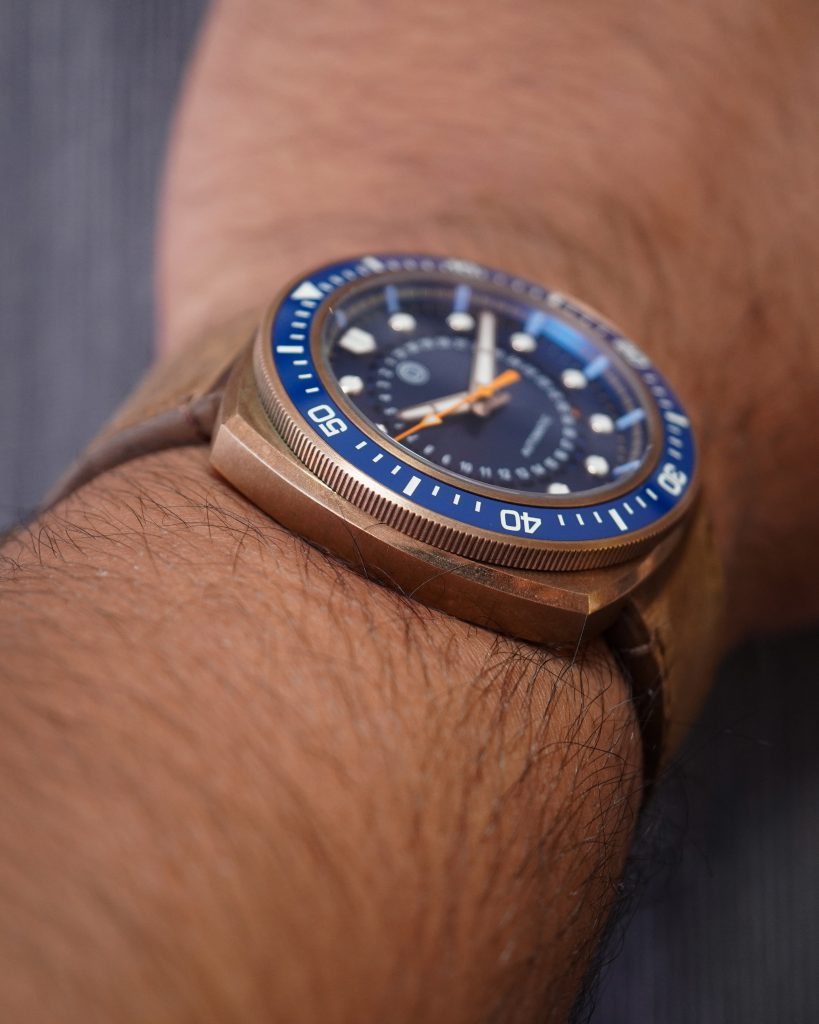
The clasp also provides around 7mm of tool-free adjustment via a button on the inside, adding versatility for a precise fit. Meanwhile, the bronze variant ships with a leather strap and matching bronze buckle. While I find the strap robust and of decent quality, a thinner, more tapered strap might better suit the watch’s overall design. The steel variant measured to my wrist weighed 175g and the bronze variant was 97g. Overall, the Cuttlechron’s wear-ability is excellent, whether on the included steel bracelet or an alternate strap.
Wrapping Up
To quickly summarize, the Cuttlechron presents itself as a well-crafted watch with a thoughtful design. It offers a range of dial and case options, along with a unique case shape that adds character. At its core is the reliable Miyota 9015 movement, paired with a sturdy bracelet on the steel model, extensive lume application, and an overall strong value proposition for its $500 price point.
If I had to nit-pick, I’d mention that the blue dial version showed minor quality control issues on the dial, but this is expected in a prototype, and it shouldn’t be a major concern. A slightly increased taper on the bracelet and strap could have enhance the fit, though the current design still wears comfortably. Overall, the Cuttlechron delivers a very strong package, even at its pre-order prices, making it a compelling choice in its category. I wouldn’t hesitate to recommend this watch to someone who finds the design appealing.

